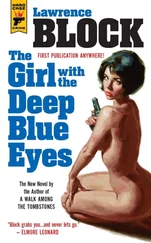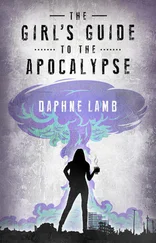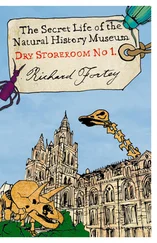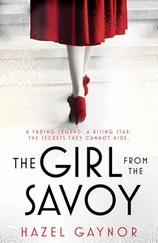And I just wasn’t cooperating.
Jaclyn Friedman, editor of Yes Means Yes! Visions of Female Sexual Power & a World Without Rape, made an impassioned yet sensible argument about why Polanski should be jailed despite my wishes.
…rape isn’t just a crime against one person, and we don’t prosecute it in order to fulfill any one victim’s needs or wishes. Rape is a crime against the social fabric that binds all of us together… when the perpetrator goes unpunished, it makes all of us less safe. Not just because there’s one more rapist on the loose, but because that lack of accountability sends a message to other would-be rapists: Go ahead and rape someone. The rest of us don’t care that much, as long as it’s not us or someone we love. In this case, we might add a caveat: Especially if you’re rich and talented and have powerful friends.
This is the reason, Friedman suggests, the plaintiff in any criminal rape case isn’t the victim—it’s the government. Rape cases are pursued by a representative of all of us because all of us are harmed when someone rapes.
I do understand this. I also understand that the punishment should fit the crime. Polanski had already served time—in both California and Switzerland. How much do they want? And I struggle with why what “they” want matters. More strangers weighing in on my life!
The months of Polanski’s incarceration in Switzerland, the legal wrangling—it was all awful. The panic attacks and insomnia I’d suffered from on and off for my entire life returned in full force. I was finding it harder and harder to concentrate at work, and my boss, while understanding, was also concerned. I was afraid I’d lose my job—which added to the insomnia and panic.
As my advocate, Larry filed a “Victim’s Statement” with the appeals court supporting Polanski’s motion to dismiss the case against him. I think he cleverly combined my thoughts and wishes with a strong formal legal argument. Here is a portion:
Since the outset of this case, Samantha Geimer has attempted to be left alone. Because she is a victim of a celebrity crime, that has not happened. After years and years of being followed, pursued, hounded, photographed, and videoed openly and surreptitiously by hundreds, if not thousands, she was advised by a knowledgeable reporter that if she would only tell her story it would all go away. She was told that it was her silence that made pursuit of her even more intense. She told her story and she is still the victim of an intense public curiosity. Over the years, for example, her children have been approached at school, friends of hers have been approached for photographs or comments, surreptitious reporters and photographers have parked outside her house with drilled holes in vehicles attempting to take photographs or videos of her. Her children, in her absence, have been gifted by photographers for information—tell your child to throw away a gift toy. In violation of Judge Rittenband’s order, the District Attorney consented to the making public of the grand jury testimony so that the world would know the sultry, [sic] albeit true, details of the crimes. It is now internetted for her husband, mother, and children to read.
Anytime Polanski is in the news, Samantha’s efforts to be left alone are vitiated. This happens when Polanski releases a new movie, when he is considered for recognition, i.e., an Academy Award. Samantha’s life is significantly interfered with every time his celebrity becomes more public. It just happened again.
On September 26, 2009, as the world knows, Polanski was arrested in Switzerland. That arrest has yet again focused a media frenzy on Polanski, and therefore on Samantha. Between Samantha and her counsel, they have received close to 500 telephone calls from media around the world seeking a comment, seeking interviews, seeking photographs, seeking appearances, seeking old photographs, seeking new photographs, seeking a statement, seeking anything to feed the frenzy. The response of “no comment” has been met with offers of money, and other gratuities in exchange for a word or two or an appearance from Samantha. The response has been: “leave me alone.”
But they won’t leave her alone. Her mother has been followed by news organizations and paparazzi. Samantha’s children have been hounded by photographers and reporters. Samantha has been greeted at places where she tries to live her normal life, i.e., at an airport, with photographers, reporters, and paparazzi. They have surrounded her house waiting for the moment when she will yield to the pressure and come out and talk. Calls, at all hours, invade her at home, on her cell phone, and at her place of employment. The victim is again the victim. The pursuit has caused her to have health-related issues. The pursuit has caused her performance at her job to be interfered with, and has caused the understandable displeasure of her employer and the real possibility that Samantha could lose her job.
Now faced with economic consequences in this economy of being unemployed, yet once more this victim has been victimized. It has been happening for 32 years. Everyone claims they are “doing their job,” but she may have no job. Everyone claims that they are acting to vindicate justice, but Samantha sees no justice. Everyone insists that she owes them a story, but her story continues to be sad. She endures this life because a corrupt judge caused, understandably, Polanski to flee. No matter what his crime, Polanski was entitled to be treated fairly; he was not. The day Polanski fled was a sad day for American Justice. Samantha should not be made to pay the price. She has been paying for a failed judicial and prosecutorial system.
This statement makes one more demand, one more request, one more plea: Leave her alone.
Whether you perceived Polanski as monster or the victim himself of vicious persecution, there is one thing both sides could agree on: the perfidy of my mother and me. In a piece in the Huffington Post that began, “I’ve had it with the Swiss,” Joan Z. Shore, an expat living in Belgium who calls herself the founder of Women Overseas for Equality” (“WOE”—really), wrote:
The 13-year-old model “seduced” by Polanski had been thrust onto him by her mother, who wanted her in the movies. The girl was just a few weeks short of her 14th birthday, which was the age of consent in California. (It’s probably 13 by now!) Polanski was demonized by the press, convicted, and managed to flee, fearing a heavy sentence. I met Polanski shortly after he fled America and was filming Tess in Normandy. I was working in the CBS News bureau in Paris, and I accompanied Mike Wallace for a Sixty Minutes interview with Polanski on the set. Mike thought he would be meeting the devil incarnate, but was utterly charmed by Roman’s sobriety and intelligence.
Oh man. But this is the quality of insight that passes for journalism. He couldn’t have raped that girl, because the thirteen-year-old was a skank, had been pimped out by her ambitious mom, and besides, all people who do bad things are stupid, ugly, and look like criminals. Shore doesn’t let facts muddy her vicious judgment, but for the record, the legal age of consent in California is eighteen, and has been so for more than a century. Even in Shore’s adopted Belgium, the age of consent is sixteen.
Perhaps the most disturbing slam from a Polanski apologist came in an October 2009 interview with Gore Vidal, conducted by John Meroney in the Atlantic shortly after Polanski was arrested. Vidal and Polanski had been friends in Hollywood.
MERONEY: During the time of the original incident, you were working in the industry, and you and Polanski had a common friend in theater critic and producer Kenneth Tynan. So what’s your take on Polanski, this many years later?
Читать дальше












